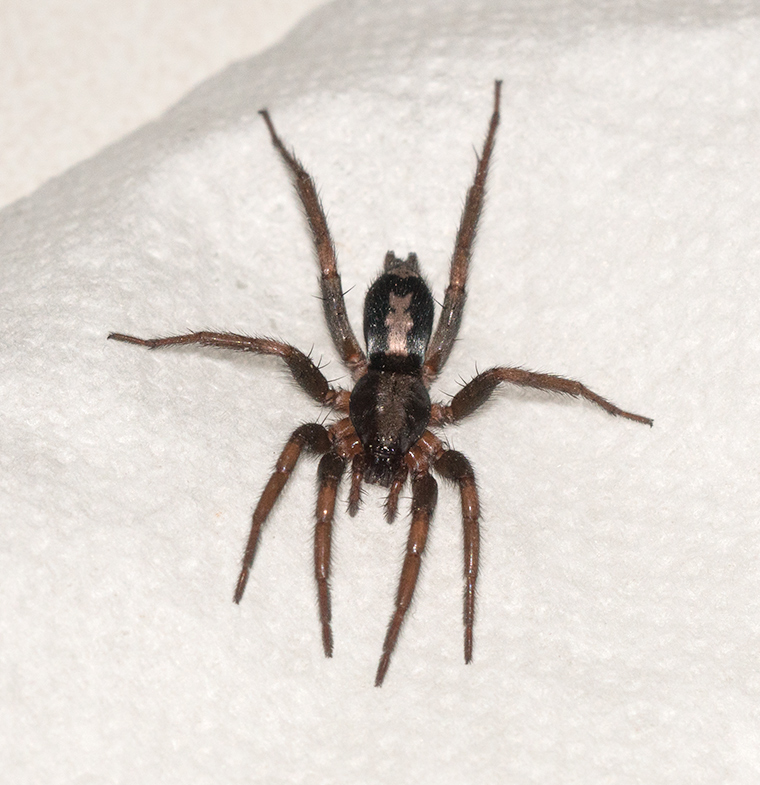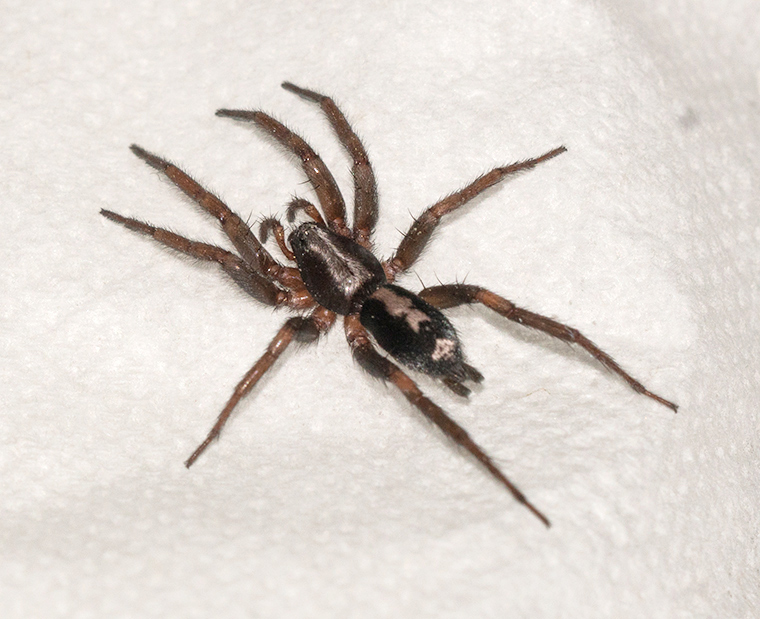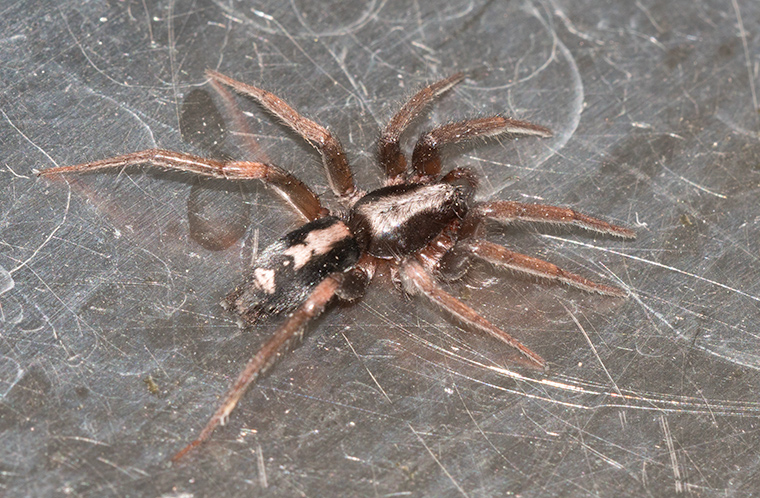This is a Parson Spoider (Herpyllus ecclesiasticus). We occasionally see one running around the house. It is classified in the family Gnaphosidae, a group commonly called Ground Spiders or, better yet, Stealthy Ground Spiders! There are more than 2,000 species world-wide in this family. Because of the distinctive pattern on its back, this is one of the few easy-to-identify species in the family.
Parson Spiders hunt by running around on the ground and do not build a web to capture anything. They can produce silk, however, and often lurk in a sort of den made of silk during the daytime. They mostly hunt during the night. Two spinnerets (which exude the silk) can be seen as large cylindrical tubes sticking out from the back of the abdomen.
Parson Spiders are not dangerous to humans except for a possible, and very rare, allergic reaction to a bite. About the only way to get bitten by one of these creatures is to get one entangled in clothing you are trying to put on.
This last photographs shows the spider where I originally spotted it. After venturing into the stainless steel sink, it was unable to climb back out again. I took a picture or two of it in case it escaped when I was trying to get it out of the sink. It is not the greatest picture, but it does show the light-colored pattern of hairs on the cephalothorax and abdomen better than the other photographs above.
This pattern on the upper side of the spider was supposed by someone to resemble the necktie, or cravat, worn by preachers in the 17th or 18th century…thus the common name of Parson Spider. The generic name Herpyllus refers in Greek to a plant, the Tufted Thyme (Thymus caespititius). This species is a low, creeping ground cover type of plant, and I suppose our spider’s habit of creeping about on the ground caused it to get this generic name.



